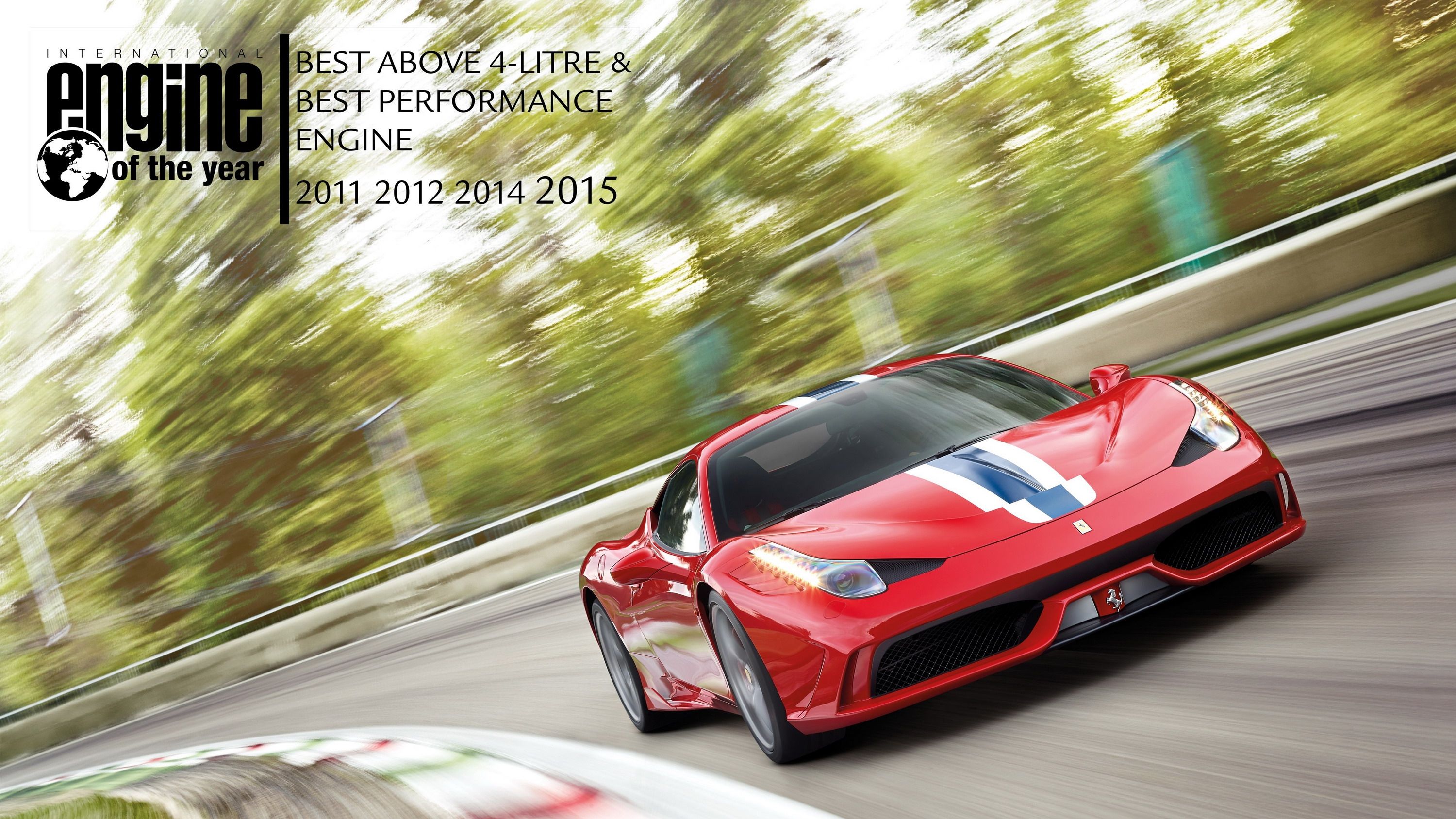Few could argue against the superb qualities of Ferrari’s->ke252 naturally aspirated 4.5-liter V-8 (especially when judged alongside its turbocharged, jimmy-rustling replacement), and now, NA fanboys can point to the 2015 International Engine of the Year Awards as further proof of its excellence.
Picking winners for the annual awards was a panel of motoring journalists from over 30 nations, who judged each shortlisted powerplant on personal driving impressions, technical specifications, fuel economy, smoothness, performance, sound and drivability.
This year, Ferrari’s 4.5-liter V-8 took home two awards, including Performance Engine of the Year and best-in-class for the Above 4-liter category.
This isn’t the first time the engine has been awarded such accolades – it also won the same two awards in 2011, 2012 and 2014. Interrupting a clean five-year streak was the naturally aspirated, 740-horsepower 6.3-liter V-12 in the 2013 Ferrari F12berlinetta, which took home the same two awards in 2013 (the V-8 came in second).
Vittorio Dini, Ferrari’s powertrain department head, had this to say: “For our team, winning both these titles for the fourth time is a crowning achievement that testifies to the world-class performance of our naturally aspirated V-8 engine family.”
Other winners at this year’s awards include Ford’s->ke31 1.0-liter turbo three-cylinder (which won the best-in-class Under-1.0-liter category for the fourth time), Tesla’s->ke1842 pure electric powertrain (Best Green Engine), and BMW’s->ke178 turbo 1.5-liter three-cylinder hybrid (Best New Engine, best-in-class 1.4-1.8-liter, and the top-honor International Engine of the Year).
Continue reading for the full story.
Why it matters
The winning Ferrari V-8 is part of the F136 line of engines, which consist of 90-degree V-8 gasoline units developed jointly by Ferrari and Maserati.->ke51 Displacements range between 4.2- and 4.7-liters, with outputs between 385 and 600 horsepower. All are naturally aspirated, and incorporate dual overhead cams, variable valve timing, and four valves per cylinder. The engines have been in use since 2002, first seeing duty in the Maserati Coupe->ke332 and Maserati Spyder,->ke2761 with the award-winning 4.5-liter variant getting shoehorned into the back of the 2014 Ferrari 458 Speciale and 2015 Ferrari 458 Speciale A. Redline in the 458->ke3479 is set at an impressive 9,000 rpm.
Replacing the 458 is the 488,->ke5071 which comes bearing a different engine as well. The new engine is a 3.9-liter V-8 from the F154 engine family, which means you’ll find two turbos attached to the exhaust manifold.
Many enthusiasts raged against the Italian automaker’s decision to reintroduce forced induction to its line of iconic road cars, with objections raised over the muted sound of the exhaust note and a less-than-immediate throttle response, even though the new engine was both more powerful and more efficient.
And while I understand the fanboys’ concerns, I don’t share them.
You see, Ferrari has a long and prestigious history with turbocharging. Back in late ‘80s, we got the 1987-1992 Ferrari F40, a car that, at the time, was the fastest, most powerful, and most expensive model Ferrari had ever produced for public consumption. That particular vehicle came bearing the Tipo F120A powerplant, which was a 2.9-liter V-8 with (*gasp*) two turbos. These days, it’s heralded as one of the best performance cars ever made, prancing horse badge or no.
Still, even with the best turbo technology in place, those exhaust-driven snails sully the driving experience for lots of folks out there. And at the end of the day, you can bet Ferrari would prefer to go boost-free. But there’s a problem – emissions. Turbochargers yield the performance while simultaneously reducing all that dirty air coming out the tailpipes in a dramatic way, which make them a necessary feature in the marque’s portfolio.
But there’s still hope.
Audi,->ke14 for example, is developing its 2014 Audi RS 5 TDI competition concept with a few gadgets the heads at Maranello may be interested in. The car sports a twin-turbo 3.0-liter V-6 diesel engine capable of producing 435 horsepower and 590 pound-feet of torque. What’s interesting about the high-performance oil-burner is that it also uses an electrically driven compressor to increase output. The unit runs off a 48-volt subsystem and offers near-instantaneous boost, yielding improved throttle response and quicker spool-time for the turbos. The car recently set a new lap record for diesel-powered cars around the German Sachsenring race track.
So what if you used that electric compressor without the turbos? In theory, you’d get more power, more efficiency, better response, and no turbine housing between you and those glorious internal combustion noises.
But I know what you’re thinking – first turbos, and now you’re talking about diesels and electricity? Why don’t they just throw low-rolling resistance tires onto every model and transform the Fiorano test circuit into a fuel economy run?
You can bet Ferrari will be equally recalcitrant when it comes to adoption of this sort of technology. But the presence of the HY-KERS system in the LaFerrari->ke4626 and two turbos in the 488 means the Italian automaker is thinking about it. And when it finally brings new tech to market, Ferrari will undoubtedly deliver the goods.
What’s more, I’m sure there will be at least one old-school throwback (that is, natural aspiration with a big cylinder count) in Ferrari’s catalogue from now until the last drop of oil is turned to airborne carbon. Otherwise, Enzo himself will come back to set things straight.
2014 Ferrari 458 Speciale
Read our full review here.

